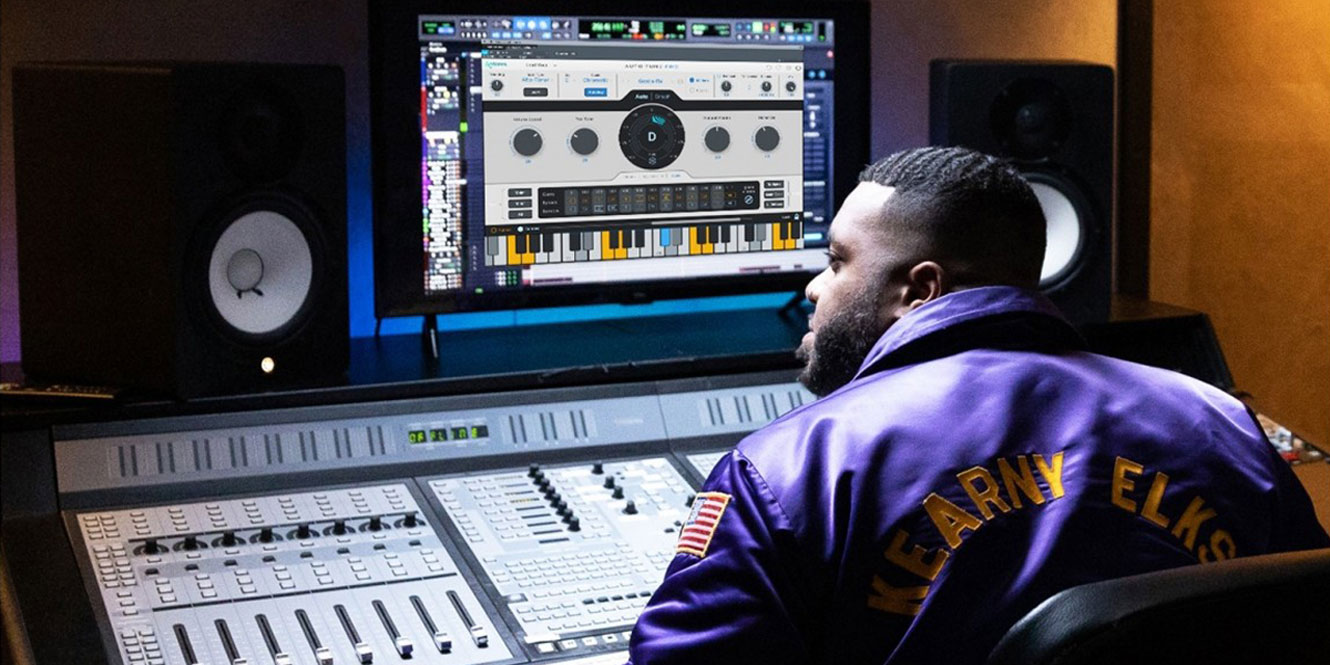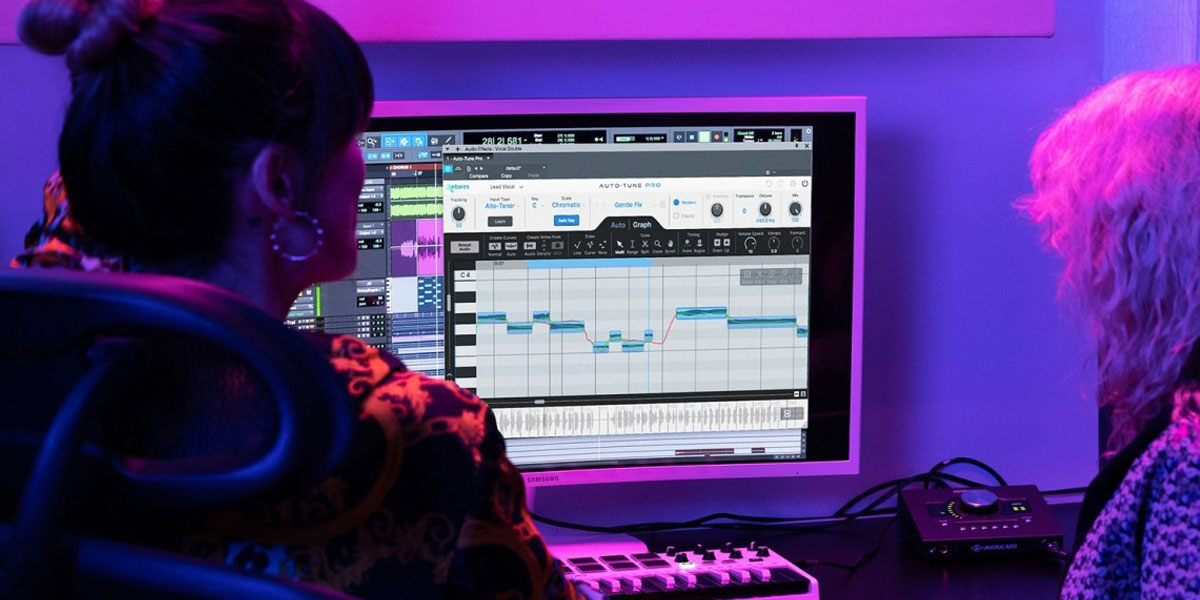What is Autotune? A question that has captured the interest of enthusiasts and professionals alike. The invention of Autotune has dramatically altered the landscape of music, morphing from a tool to fine-tune pitch into a pivotal element of artistic expression across various genres.
From hip-hop to indie rock, its influence has revolutionised the vocal sound and, by extension, the culture of music over the last two decades. Strictly speaking “Autotune” refers to the Antares Audio Technologies plugin released in 1997, however, the term is used interchangeably with “pitch correction software”.
Today, its presence is nearly ubiquitous, with artists employing it in numerous ways. Some opt for its extreme effects to define their sound, while others prefer a subtler touch to perfect their tunes. In this article, we’ll unpack everything you need to know about Autotune, demystifying its use and highlighting its significance in shaping modern music.
Main takeaways
If you’re in a hurry, here are the main things you need to know about Autotune!
A pitch correction tool developed by Antares Audio Technologies in 1997, Autotune lets you correct the note of a singer to make sure it stays in key with the rest of the instruments in a track. Now integral to modern music production, it enables both subtle corrections and distinctive vocal effects, utilised by artists for creative expression in studio recordings and live performances alike.
What is autotune?
Just like the Hoover to the vacuum or the Jacuzzi to the hot tub, “Autotune” has been colloquially adopted as an interchangeable term for pitch correction software.
Originally debuted by Antares Audio Technologies in 1997, Autotune was the first product of its kind, an innovative effect plugin for digital audio workstations (DAWs). This groundbreaking production tool was designed to perfect the pitch of singers, ensuring their voices matched the key of the song flawlessly.
At its core, Autotune corrects pitch deviations. Whether a singer’s note slightly misses the mark or an instrument strays from its intended tone, Autotune adjusts the pitch to the nearest true semitone to subtly polish a performance.
However, its use has dramatically evolved beyond mere pitch correction. Today, Autotune enables creative vocal effects and harmonisation from a single track. Artists like Travis Scott and Kanye West have exploited its capabilities, crafting their signature robotic sounds by utilising excessive use of the effect, a sound that has become synonymous with genres like hip-hop and trap.
The software also now offers real-time correction for live performances, ensuring artists remain pitch-perfect on stage.
Autotune’s introduction revolutionised music production, transforming it from a tool for minor corrections into a dynamic creative instrument.

A brief history
Autotune’s journey began in a rather unexpected way, with Dr. Andy Hildebrand, a geophysicist turned inventor. Dr. Hildebrand, who originally used his expertise in reflection seismology to locate oil reserves, found a new application for his skills in the music industry. In 1997, at the NAMM show, he introduced Autotune, a groundbreaking software Dr. Hildebrand developed under the company Antares Audio Technologies.
Initially designed for subtle pitch corrections, Autotune’s potential was unleashed in 1998 with Cher’s hit “Believe,” showcasing its signature hard-tuned vocal effect. This pivotal moment not only popularised the tool but also marked a shift in how music could be produced and perceived.
Becoming a game-changer in most recording studios in the years that followed, Autotune has undergone huge transformations, adding new features and effects to become a creative tool in its own right, far from the humble origins of fixing minor pitch issues.
How autotune works
Autotune works by analysing incoming audio signals in real time to detect the pitch of vocal notes. The core of Autotune’s functionality hinges on its ability to identify the fundamental frequency of any sound, be it a singer’s voice or musical instrument.
To accomplish this, Autotune employs Fast Fourier Transform (FFT) technology. FFT is a mathematical algorithm that converts a signal from the time domain into a frequency domain. Through this conversion, the complex waveform of the audio signal is broken down into its individual frequencies. This process enables Autotune to isolate the fundamental frequency, which is essential for determining the pitch of the sound.
The significance of using FFT lies in its accuracy in handling real-world sounds such as singing, which aren’t sung in pure tones. Singing is often a mix of overtones and harmonics combined to make one sound, making an FFT’s role in pinpointing the fundamental frequency pivotal for accurate pitch correction.
Once the fundamental frequency is detected, Autotune compares it to a predefined scale or a musical key set by you, the musician or producer. This scale serves as a reference for pitch correction, with each note representing a target frequency.
If the detected pitch deviates from the scale, the software calculates the pitch error by measuring the difference between the detected frequency and the nearest note within the chosen scale. Based on this error, Autotune can then adjust the pitch automatically to match the nearest correct note in the scale, ensuring that the vocal performance is in tune with the desired musical key.
Alongside the automatic pitch correction for real-time corrections, Autotune software also offers manual adjustment, allowing producers to move notes with flexibility to any desired pitch for more creative and expressive manipulation of the singer’s performance.

How to use autotune
Using Autotune can elevate your music by blending pitch perfection with performance artistry. Here’s how to get started:
- Key and Scale: First, set Autotune to your song’s key and scale. This guides Autotune on which pitches to adjust. Unsure? Opt for a chromatic scale for flexibility
- Input Type: Match the input type to your audio source (e.g., Soprano, Alto/Tenor, Instrument). This improves pitch correction accuracy by tailoring Autotune’s detection to the specific frequency range
- Speed Control: The speed setting adjusts the correction aggressiveness. A fast setting gives that iconic Autotune effect, while slower speeds allow for subtler, more natural corrections
- Two-Stage Editing: Begin with automatic tuning for broad adjustments, then fine-tune with graphical editing for precision
- Correction Amount: The correction amount can vary from minimal for a natural feel to maximum for complete pitch correction, depending on your artistic vision
- Humanization: The humanization feature adds naturalness to sustained notes by varying the retune speed, making the effect less robotic
Things to consider when using autotune
Jumping into Autotune can feel like unlocking a new level of music production, but it’s not just about hitting a button and watching the magic happen. It’s a powerful tool that requires some know-how.
Firstly, knowing your song’s musical key is crucial. If Autotune doesn’t know the key, it might tune up or down to completely the wrong note. If music theory sounds like gibberish to you, no worries, there are built-in tools in your DAW that can figure out the key for you, making sure Autotune aligns pitches perfectly with your track.
Then, there’s the input type. Autotune isn’t one-size-fits-all; it needs to know what the audio source is – be it a soprano’s high notes or the low tones of a bass guitar. Picking the right input type is crucial to ensuring the corrections feel natural to the performance.
Lastly, pay attention to the retune speed. Want that unmistakable T-Pain effect? Crank it up for instant pitch perfection. But if you’re all about keeping things natural, a slower retune speed will gently guide the vocals back on track without losing their soul.
Remember, Autotune is a tool, not a crutch. Play around with these settings to fix pitches and add a new layer of polish to your music.
Examples of autotune
Cher – “Believe”
Daft Punk – “One More Time”
Kanye West – “Heartless”
Bon Iver – “Woods”
Rihanna – “Disturbia”
FAQs
Why do singers use Autotune?
Singers use Autotune to correct off-pitch vocal performances and preserve the musicality of a song. Additional uses include the robotic effect found in hip-hop genres when heavily used and the creation of harmonies from a single vocal track.
How do you know if a singer uses autotune?
You can tell if a singer has used Autotune by listening for perfect pitch and any unusual artefacts in their voice. Ample use of Autotune creates unnatural pitch consistency where every note sounds robotic as well as introducing distracting glitches and artefacts.
Do all singers use Autotune now?
Not every singer uses Autotune, though it’s widely adopted across many genres since its debut in Cher’s “Believe.” Hip-hop artists like Future and Travis Scott leverage it for unique sounds, showing its versatility beyond pitch correction, whereas pop singers apply pitch correction more subtly.
Final thoughts
We hope we’ve answered your question, What is Autotune? This pitch correction tool has had a profound impact on shaping popular music trends, setting new standards for the industry.
Its role goes beyond mere pitch correction; it’ also offers artists the ability to craft unique vocal styles and sound signatures. As technology evolves, Autotune’s versatility only expands, attracting a broad spectrum of artists keen on exploring its potential.
If you want to explore more software beyond the Antares tool, check out our favourite pitch-correction plugins.













0 Comments